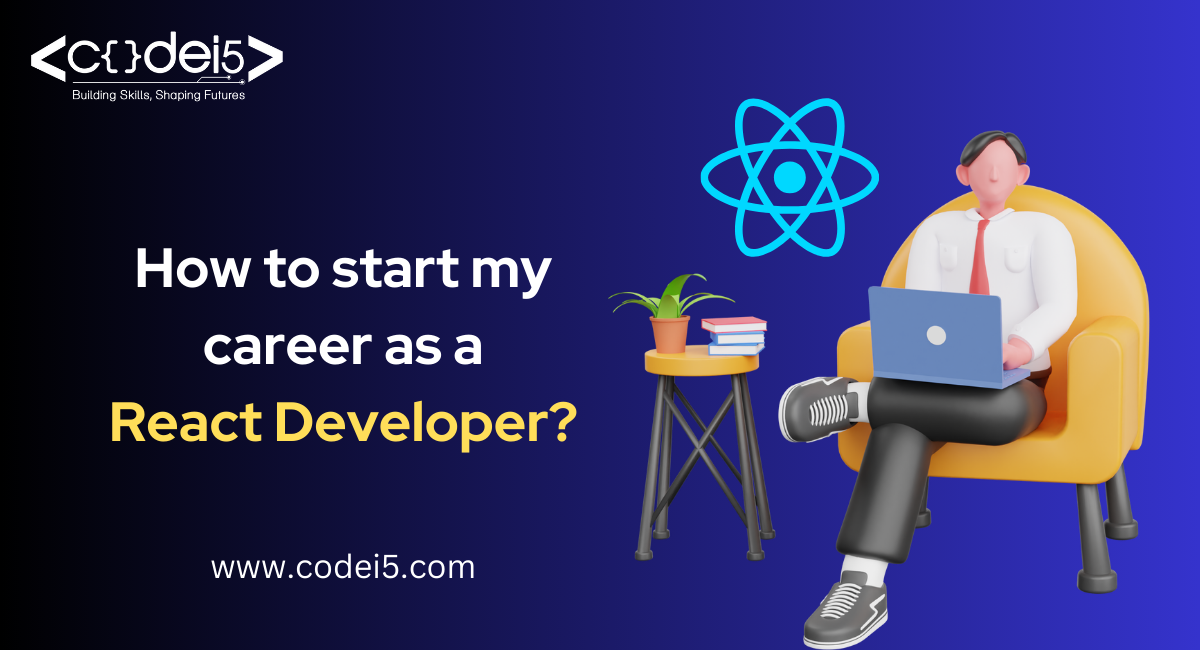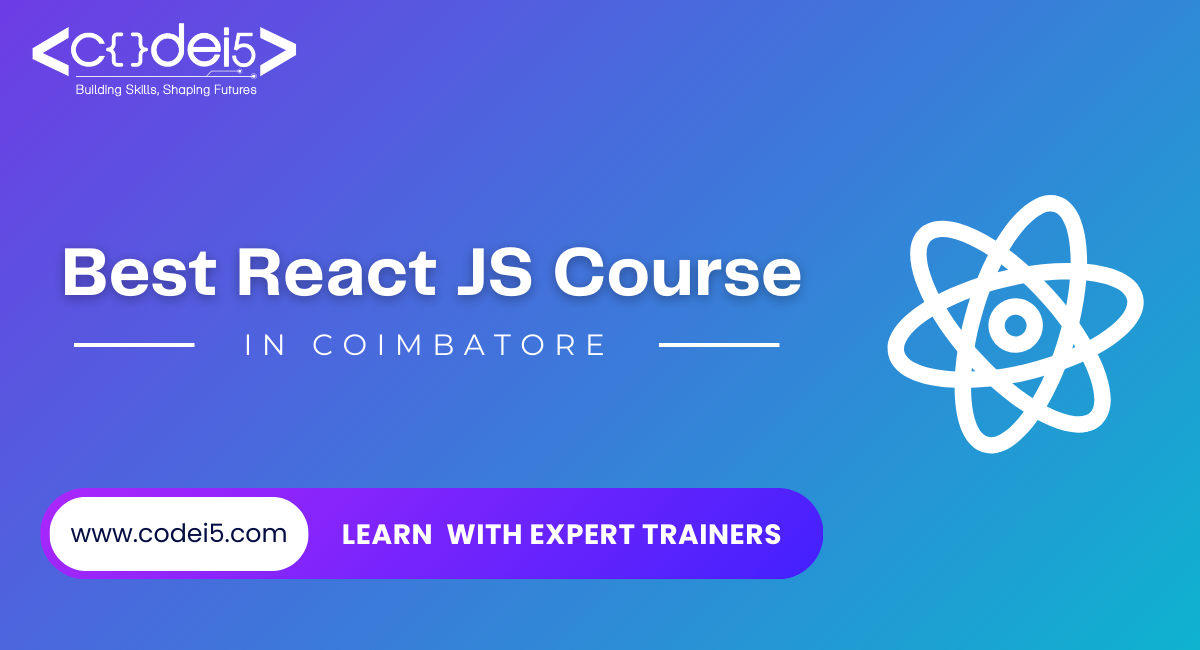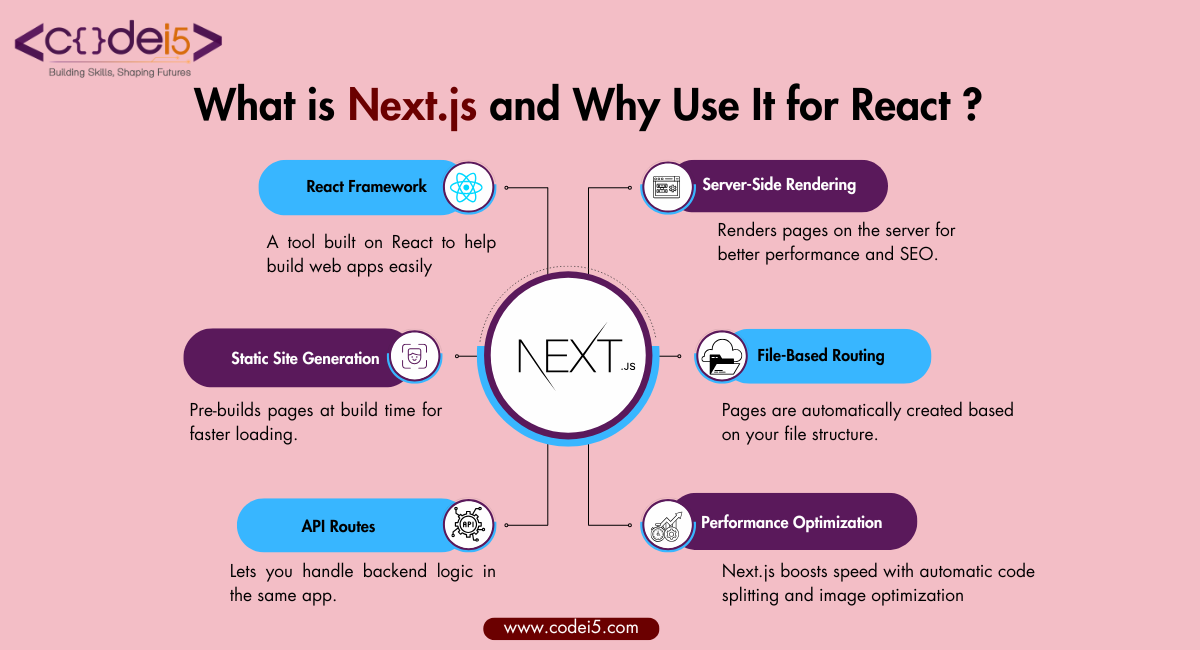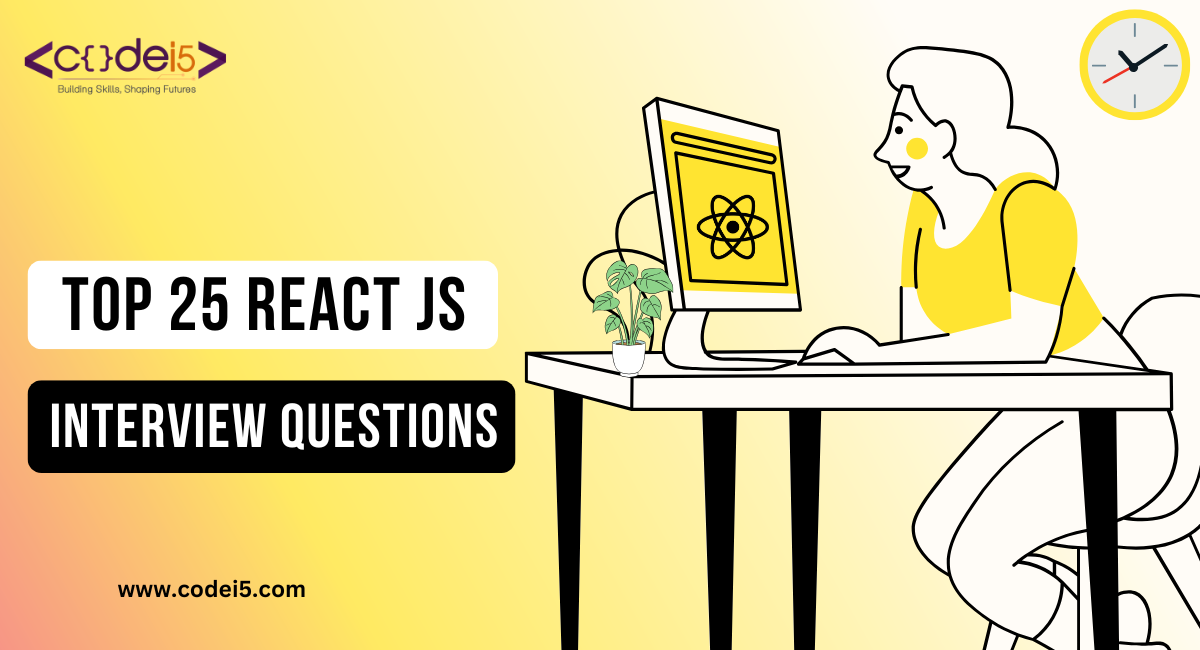
Imagine your code coordinating the creation of aesthetically spectacular, fluid web apps that enthral people and improve their online experiences. Here, creativity and interaction converge in the dynamic realm of React development.
We’re about to embark on an exciting adventure into the realm of React, so buckle up if you’ve ever dreamed of creating the digital landscapes of the future. Let your imagination run wild, use component power, and join the elite group of React developers influencing the direction of web interaction. Starting with a ReactJS tutorial for beginners is a great way to learn the basics of this powerful JavaScript toolkit and get started in web development.
Let’s launch you into the role of React virtuoso, where each code line becomes an artistic expression of genius in your creation!
What is ReactJs?
Facebook develops and maintains ReactJS, sometimes known as React, which is an open-source JavaScript library. Building user interfaces (UIs) for single-page applications—where the user interacts with the web page without needing to reload the entire page—is its primary usage. Since its initial release in 2013, React has become increasingly popular because of its declarative UI construction methodology and efficiency.
Exploring available ReactJS jobs can provide significant insights into the precise talents and experiences that businesses seek in the ever-changing world of web development.
How to become a React developer?
Gaining expertise as a React developer requires a deliberate combination of practical experience and core education. Start with learning the fundamentals of web programming by being well-versed in HTML, CSS, and JavaScript. After you have a firm grasp, move on to the principles of React by studying official material and tutorials.
Transforming theoretical knowledge into actual abilities through small projects and the use of fundamental ideas like components, states, and props is a crucial step. Explore the React ecosystem as you go along, incorporating resources like React Router for navigation and Redux for state management. Explore more complex subjects, such as hooks and component lifecycles, which are essential for developing dynamic applications. Starting with a ReactJS course for beginners is a great way to learn the basics of this powerful JavaScript toolkit and get started in web development.
Apply for jobs or internships, practice problem-solving techniques for interviews, and have an open mind by constantly learning new technologies in order to stay on the cutting edge of React development. Recall that learning, applying, and growing is a dynamic process that is necessary to become a proficient React developer.
Build your portfolio:
Developing a strong portfolio is a critical first step in becoming a recognized expert React developer. Your portfolio provides prospective employers with an overview of your abilities by showcasing your projects, skills, and coding style. Here’s how you put together a standout portfolio:
1. Choose a Clean and professional design:
Choose a polished, professional style that demonstrates your attention to detail. Ensure that navigating your portfolio is simple and visually appealing.
2. Introduce yourself:
Provide a brief overview that emphasizes your experience, abilities, and enthusiasm for React programming. Visitors can learn more about you through this intimate contact.
3. Highlight your skills:
Make a section where you highlight your abilities. Indicate in detail your familiarity with React.js and any other relevant technologies, tools, or frameworks.
4. Responsive Designs:
Make sure your portfolio is optimized for mobile devices to highlight your proficiency with responsive design ideas. Demonstrate your skill in writing apps that easily adjust to various screen sizes.
5. Include a Blog or Technical Writing Section:
Add a blog or technical writing section to showcase your ability to explain intricate technical ideas. Talk about your experiences, knowledge, or tutorials about React programming. This will position you as a thinking leader while also showcasing your skills.
6. Testimonials and Recommendations:
Provide references or recommendations from instructors, associates, or project partners. Positive comments from other people can support your professionalism and believability.
7. Demonstrate Problem Solving Skills:
Describe any obstacles you had while working on the project and how you overcame them. Emphasize your capacity for handling challenging problems and your ability to solve them.
Your chances of leaving a lasting impression on prospective employers and landing a job as a React developer will be greatly increased if you put time and effort into creating a thorough and visually appealing portfolio.
Networking and Building Relationships:
Developing deep connections and a robust professional network are essential to being a successful React developer. The following are some practical methods for making connections and Networking within the React development community:
1. Engage in Online Communities:
Join social media groups, communities, and forums centred around React.
React developer communities are active on sites like Twitter, Reddit (r/reactjs), Stack Overflow, and Reddit.
Engage in dialogue, impart your expertise, and ask for guidance.
2. Attend meetings and conferences:
Participate in conferences, workshops, and meetings devoted to React development, either in person or virtually.
These gatherings offer chances to network with seasoned professionals, discover the newest styles, and demonstrate your abilities.
3. Contribute to open source projects:
Participate in React projects that are open source on websites like GitHub.
This improves your coding abilities and gives you awareness in the community as well as opportunities to work with other developers.
4. LinkedIn Networking:
Make sure your LinkedIn profile is optimized to showcase your experiences and abilities in React.
Make connections with influencers, recruiters, and developers who work in the sector. In order to make an impression on the React ecosystem, interact with their content and offer your perspectives.
5. Mentorship and Being Mentored:
Seek mentorship from seasoned React developers who can offer direction and counsel derived from their encounters.
Meanwhile, think about providing mentorship to others who are less experienced with React than you. Establishing a mentor-mentee connection can be advantageous for both parties.
6. Collaborate on Projects:
Work on React projects with other developers.
Collaborating in a group setting enhances your ability to work with others and provides opportunities to absorb different viewpoints and methods.
Recall that developing relationships takes time, and Networking is a continuous process. Be dependable, sincere, and receptive to new information from others. Regularly engaging with the React development community will help you advance your career and build a stronger professional network.
Working with Real World Projects:
Engaging with real-world projects is a pivotal phase in the journey of a React developer, offering an invaluable bridge between theoretical knowledge and practical application. Here are key insights into working with real-world projects:
Problem Solving in Action:
Real-world projects have obstacles that extend beyond theoretical principles. They necessitate problem-solving abilities, critical thinking, and the capacity to discover effective solutions within the constraints of a project’s specific needs.
Collaboration and Teamwork:
Many real-world projects require collaboration among multiple teams, including designers, backend engineers, and project managers. Learning how to effectively communicate, cooperate, and integrate your work into a bigger project is critical.
Code Readability and Maintainability:
Real-world projects highlight the importance of writing clean, legible, and maintainable code. Adopting best practices guarantees that your code is understandable and adaptive as the project progresses.
Understanding user requirements:
Real-world initiatives often begin with user needs. Learning to read and apply these requirements improves your ability to construct applications that satisfy real-world needs, ensuring that your development work is consistent with user expectations.
Testing and Debugging:
Real-world projects teach you about the crucial phases of testing and debugging. These experiences, which range from unit testing to finding and addressing issues in a live environment, are invaluable in developing robust, error-free apps.
Project Documentation:
Documentation is an essential component of real-world development. It entails generating clear, concise documentation for your codebase, APIs, and project architecture to aid collaboration and future development.
Working on real-world projects offers a comprehensive learning experience that bridges the gap between theory and practice. Accept the obstacles, learn from your experiences, and use these projects as stepping stones to becoming a well-rounded and proficient React developer in the professional world.
Conclusion:
In conclusion, beginning a career as a React developer is a thrilling and dynamic adventure that necessitates a combination of fundamental understanding, practical experience, and a dedication to lifelong learning. Prioritize learning the foundations of web programming, explore the complexities of JavaScript, and become proficient with the essential ideas of React as you follow this path.
Never forget that the path to becoming a proficient React developer is paved with tenacity, flexibility, and a sincere love for creating amazing user experiences. Keep your curiosity alive, embrace obstacles as chances for personal progress, and never stop learning about the dynamic realm of React programming. You’ll find that you’re not just getting started in your fulfilling career as a React developer but growing in it with commitment and initiative.
Enhance your ReactJS skills by enrolling in our top training institute that offers a specific course that provides hands-on experience and expert assistance to aspiring web developers.





